Microbial Diseases of the Digestive System
Defenses of digestive system
Stomach: acidic
Small intestine: phagocytic cells that produce lysozyme, rapid movement of food prevents bacteria from colonizing small intestine
70% of the immune system is located in the intestinal tract
– Gut-associated lymphoid tissue (GALT)Lymph nodes
Peyer’s patches
Normal Microbiota of the Digestive System
Millions of bacteria per milliliter of saliva
Few microorganisms in the stomach
– Due to HCl productionSmall intestine
– Granule-filled phagocytic cellsLarge numbers of bacteria in the large intestine
– Mostly anaerobes and facultative anaerobes
– 100 billion bacteria per gram of feces
– Assist with enzymatic breakdown of some polysaccharides
– Produce some vitamins
1/20
Earn XP
Description and Tags
Chapter 25
Name | Mastery | Learn | Test | Matching | Spaced |
|---|
No study sessions yet.
21 Terms
Defenses of digestive system
Stomach: acidic
Small intestine: phagocytic cells that produce lysozyme, rapid movement of food prevents bacteria from colonizing small intestine
70% of the immune system is located in the intestinal tract
– Gut-associated lymphoid tissue (GALT)Lymph nodes
Peyer’s patches
Normal Microbiota of the Digestive System
Millions of bacteria per milliliter of saliva
Few microorganisms in the stomach
– Due to HCl productionSmall intestine
– Granule-filled phagocytic cellsLarge numbers of bacteria in the large intestine
– Mostly anaerobes and facultative anaerobes
– 100 billion bacteria per gram of feces
– Assist with enzymatic breakdown of some polysaccharides
– Produce some vitamins
Gingivitis
Gingivitis is inflammation of the gums
• Caused by poor oral hygiene
• Steps of infection:
• Plaque formation. This is a sticky film of bacteria and dextran
Gingivitis and tooth decay
Streptococcus mutans digests sucrose and makes dextran. Bacteria and dextran make up dental plaque
Streptococcus mutans produces lactic acid that
breaks down enamel leading to tooth decay that
can advance to tissues of the jaw
Steps of tooth infection
Plaque formation. This is a sticky film of bacteria and dextran
Plaque turns to tartar which is hard to remove and forms a protective layer around bacteria
If not removed, the tartar irritates the gum around the tooth and causes inflammation. Gums become swollen and bleed easily
Infection can get into underlying tissues and bone, and result in bone loss.
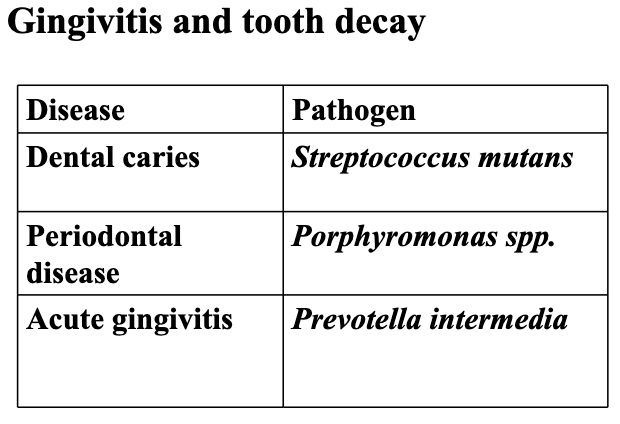
Diseases of Lower Digestive System
Infection: growth of a pathogen
–Incubation is from 12 hours to 2 weeks
–FeverIntoxication: ingestion of toxin
–Symptoms appear 1 to 48 hours after ingestionGastroenteritis: inflammation of stomach and intestinal mucosa leading to diarrhea, dysentery
Salmonellosis
Caused by Salmonella species
Bacteria invade intestinal mucosa and multiply
Source of infection is intestines of animals (chicken, eggs)
Several cases in Wisconsin due to contaminated peaches, red onions, veggie trays, etc....
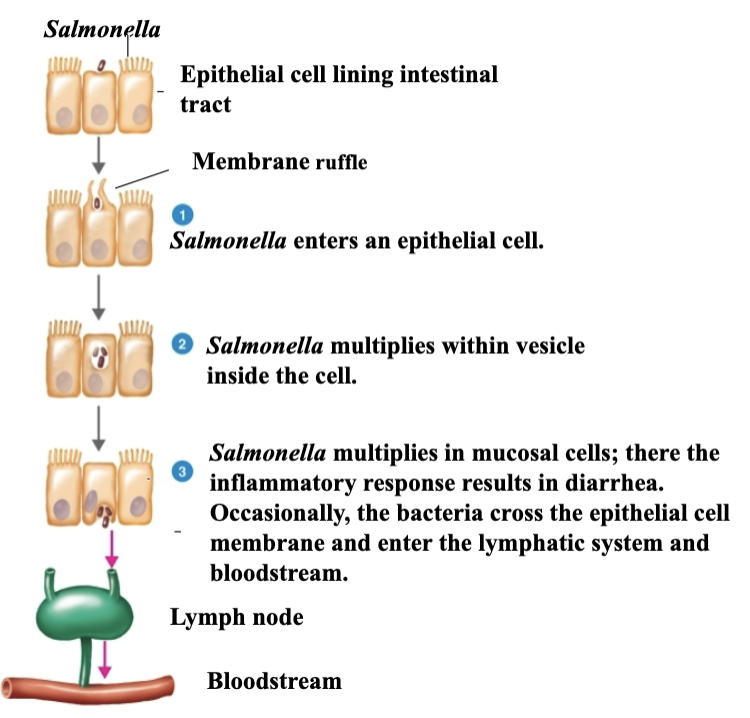
Salmonellosis
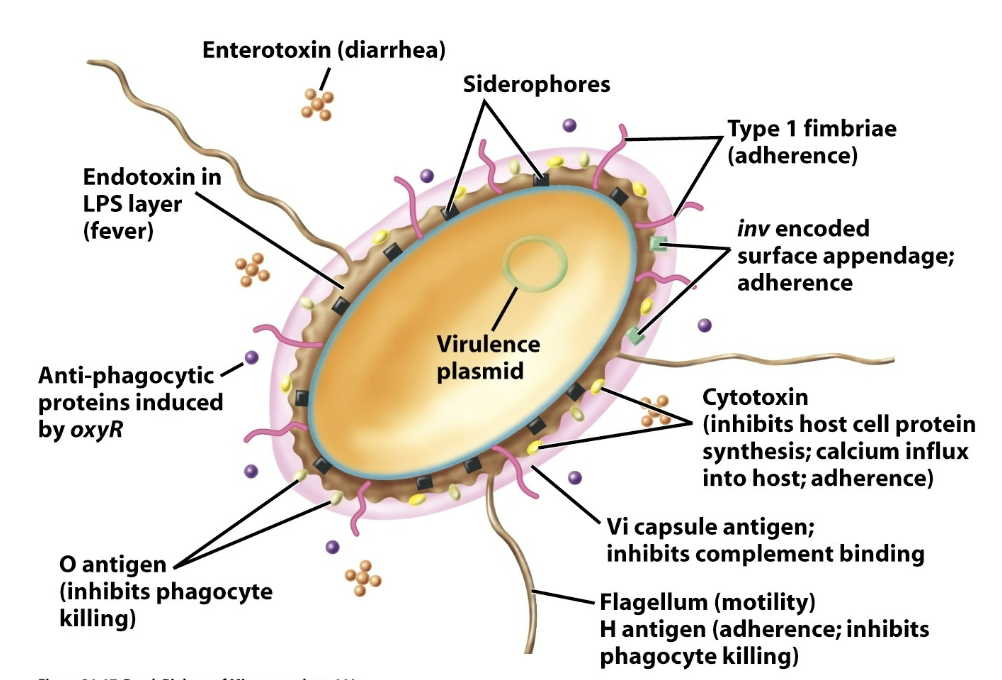
Virulence factors of Salmonella
Salmonella
Imost people, Salmonella infections may not cause symptoms
Some develop fever, diarrhea, and abdominal cramps
Complications include bacteremia (bacteria in the blood).
This can lead to infection of the brain, spinal cord, heart, and blood vessels
Prevention:
Washing hands
Avoid eating raw eggs
Store raw meat, poultry and seafood away from other foods in your refrigerator
Never place cooked food on an unwashed plate that previously held raw meat
Staphylococcal Food Poisoning
Caused by Staph. aureus, an inhabitant of nasal passages
Most common form of gastroenteritis
Intoxication due to heat stable toxin
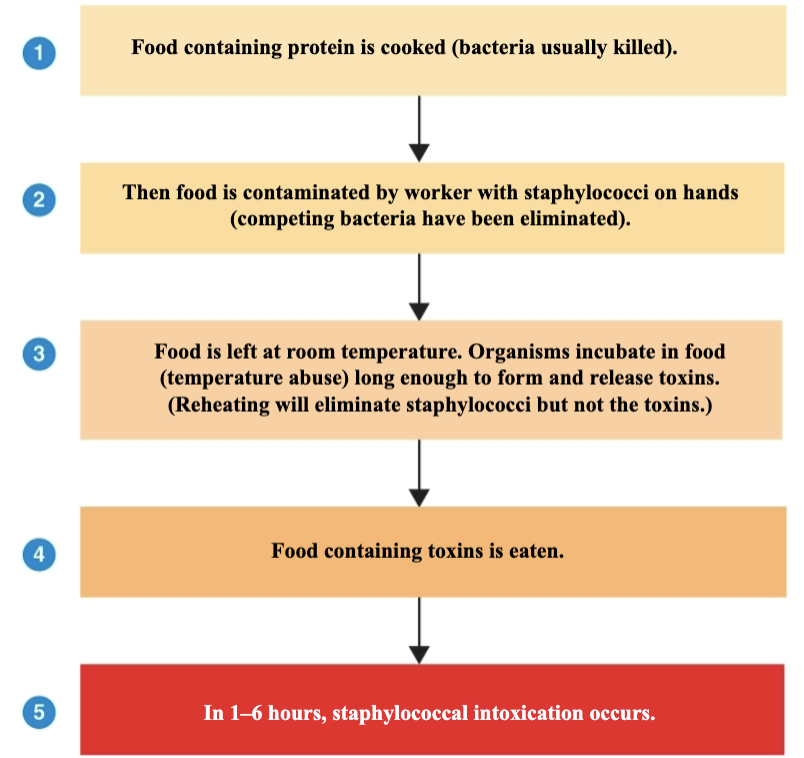
The sequence of events in a typical outbreak of staphylococcal food poisoning
Cholera
Caused by Vibrio cholerae
Vibrio cholerae serotypes that produce cholera toxin
Toxin causes host cells to secrete Cl−, HCO−, and water
Vibrio cholera
Source: contaminated water, uncooked seafood, human fecal contamination
Infection results in watery diarrhea (or rice water diarrhea), and can result in dehydration and death
Cholera toxin causes secretion of chloride ions by intestinal epithelial cells; this alters ionic balance and results in diarrhea
Cholera toxin acquired by lysogenic conversion
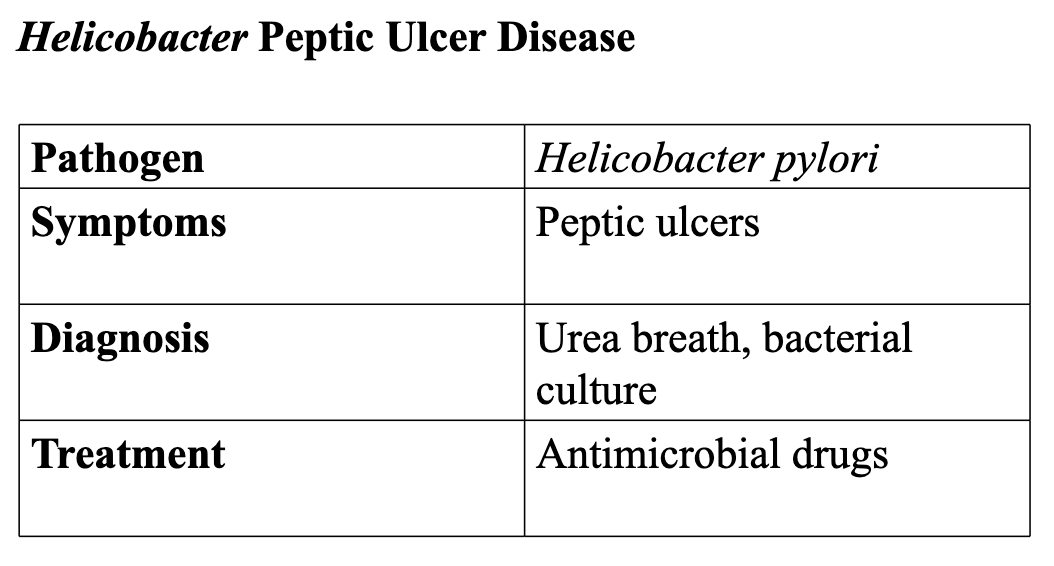
Peptic Ulcer disease
Sores that develop on the lining of the stomach or small intestine
Symptoms include:
• Burning stomach pain
• Heartburn
• NauseaSpicy food or stress do not cause ulcers, but they make symptoms worse
Infection caused by the bacterium Helicobacter pylori
Peptic Ulcer disease
H. pylori is a common inhabitant of the mucus that lines the intestinal tract.
Under normal conditions, bacterium does not cause disease
Roughly 50% of the world’s population have this bacterium in their body
2005 Nobel Prize was given to to Robin Warren and Barry Marshall for their discovery of Helicobacter pylori and its role in gastritis and peptic ulcer disease
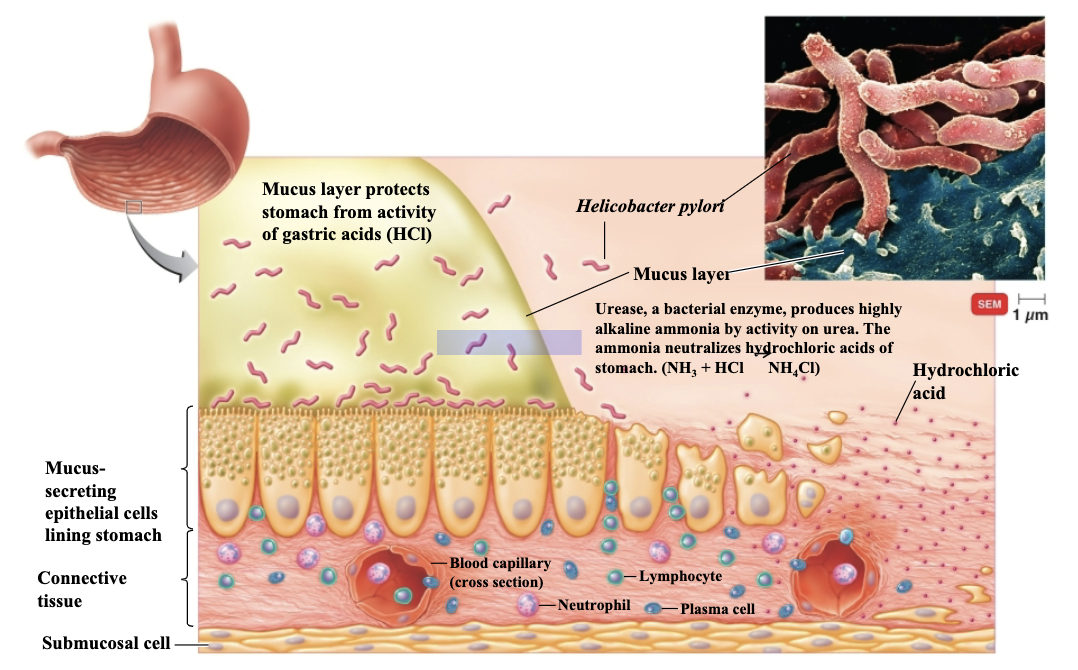
Helicobacter pylori infection
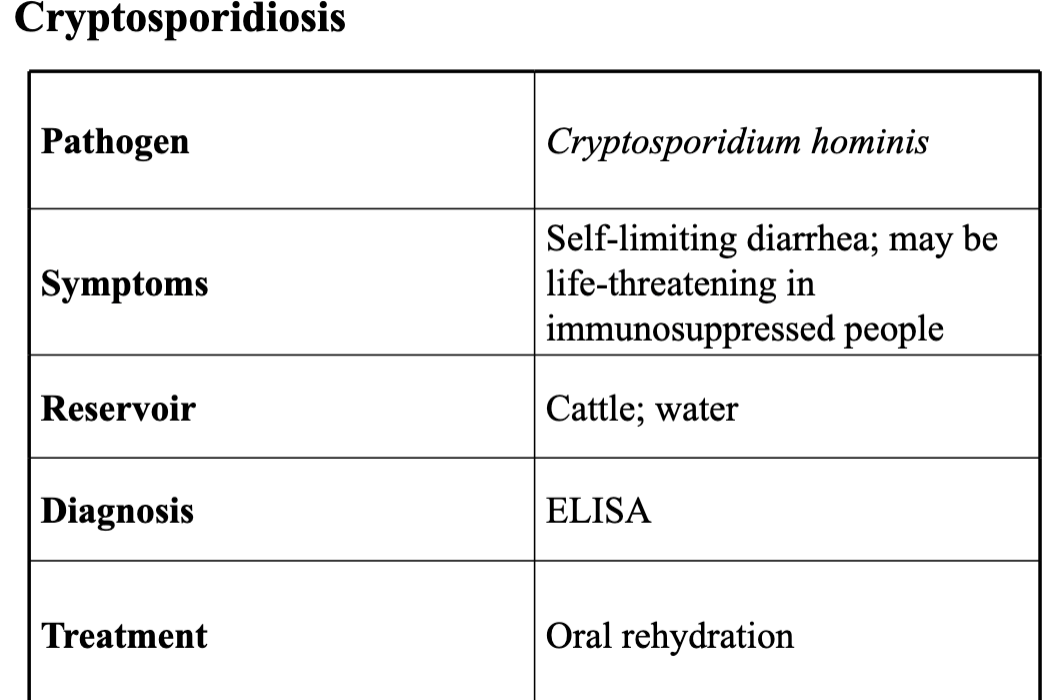
Cryptosporidiosis
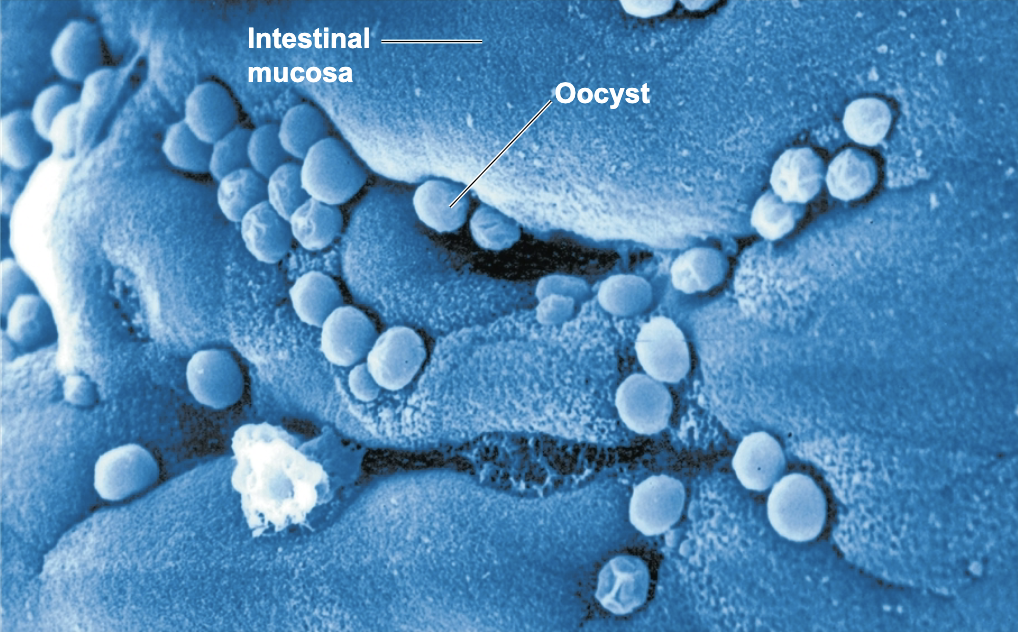
Cryptosporidiosis